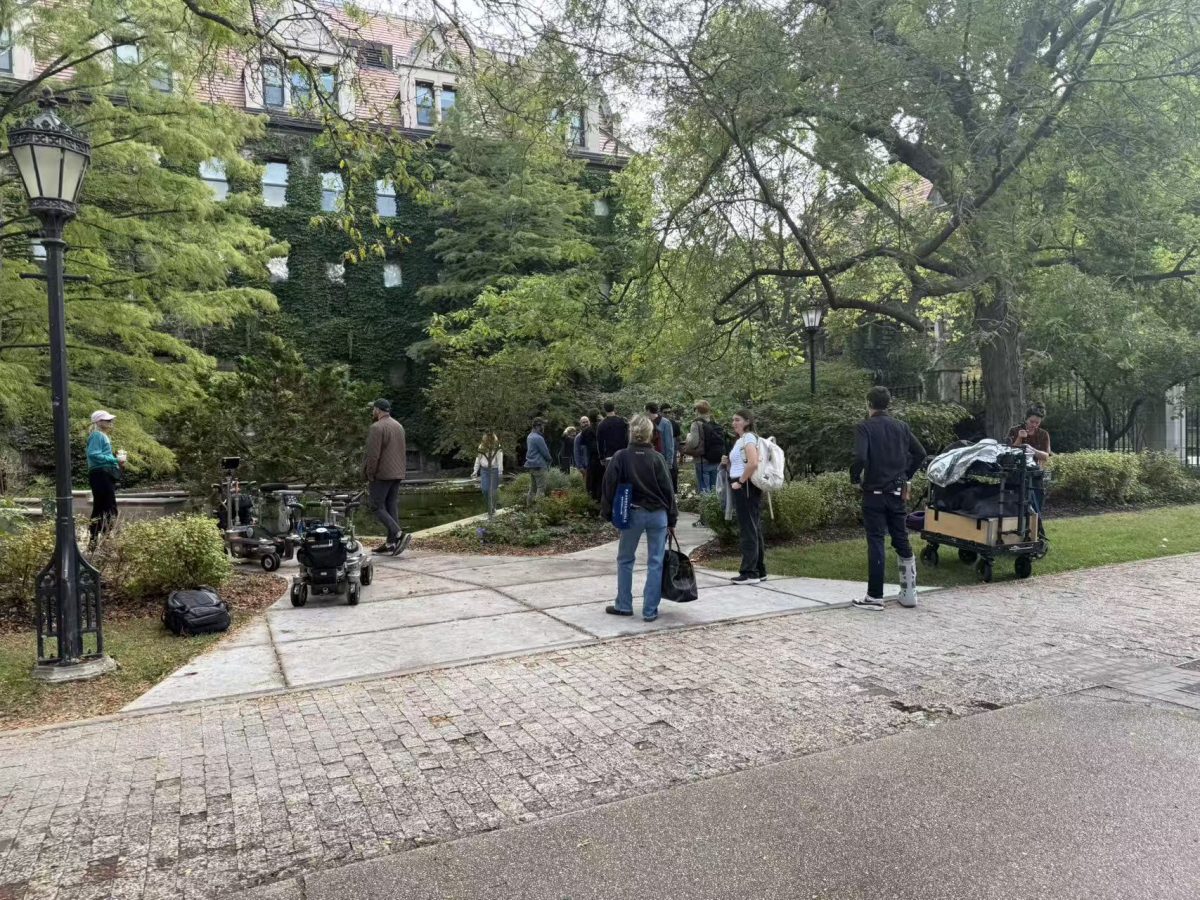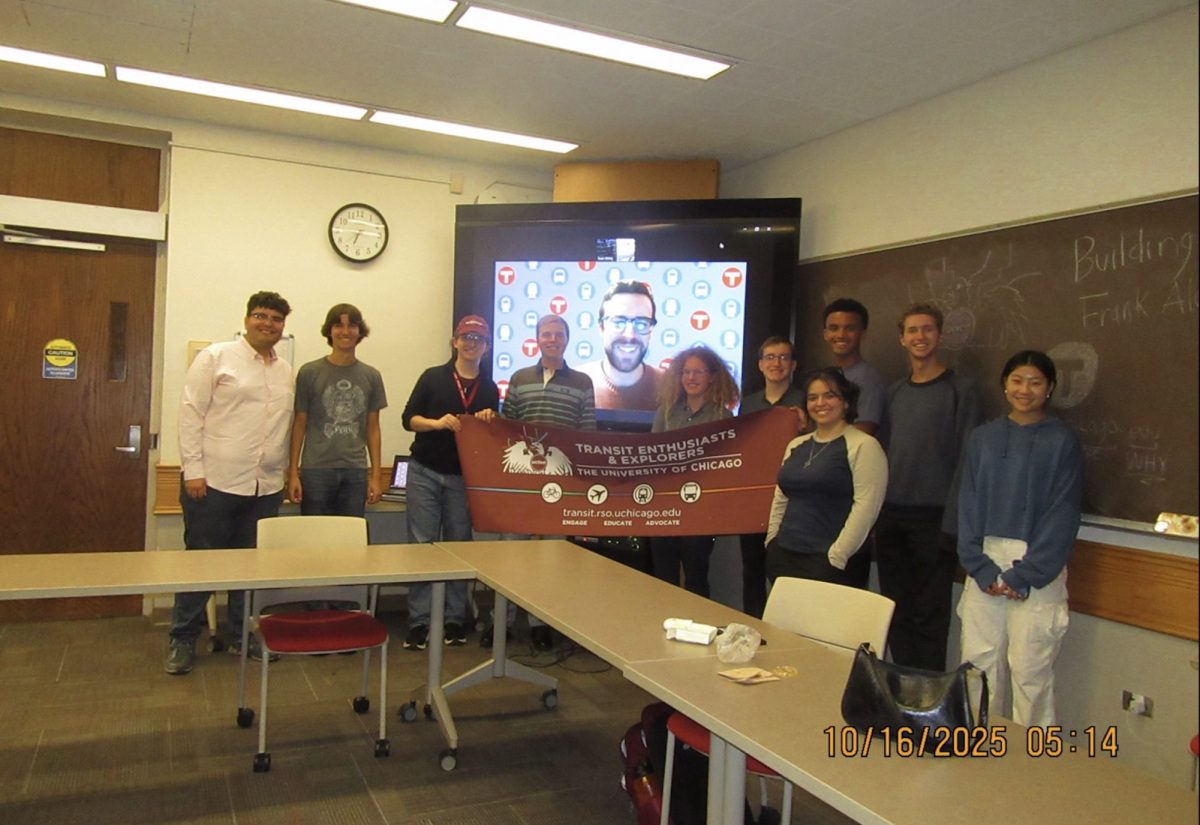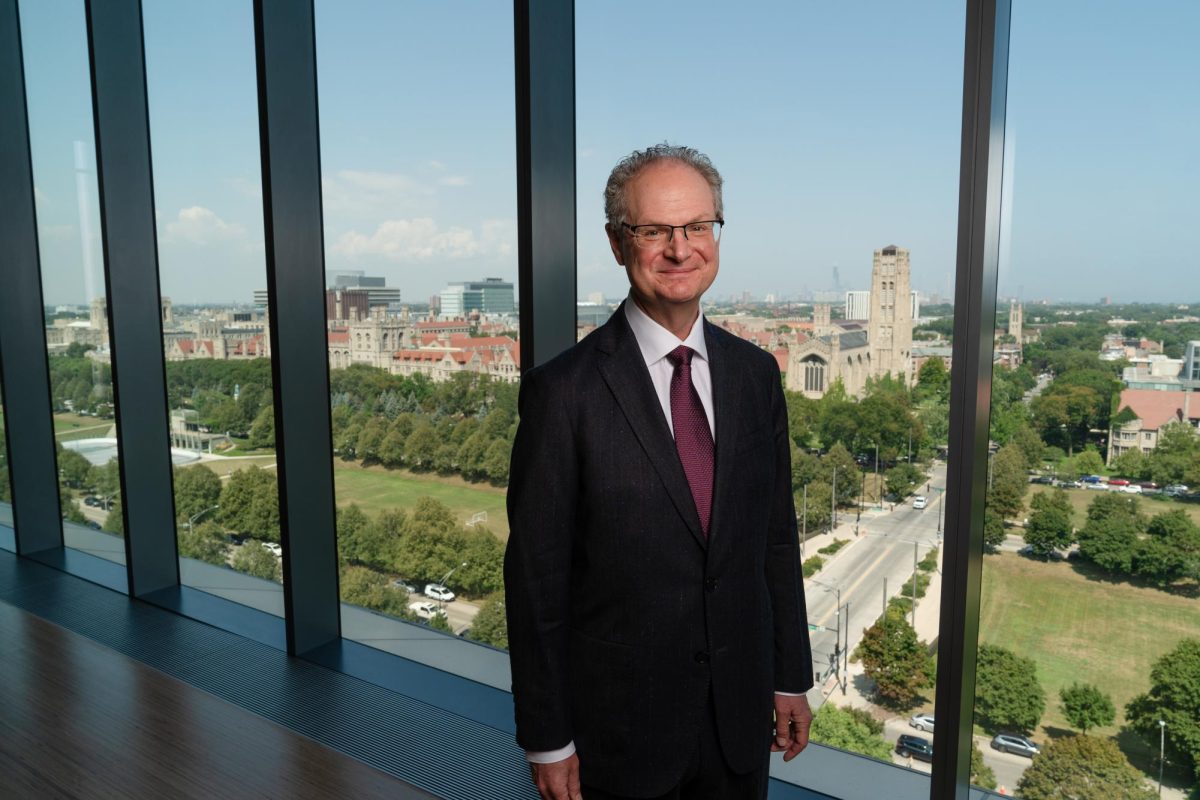[img id=”77234″ align=”alignleft”]
A glossy new member of the University of Chicago community greeted the class of 2013 Sunday when the recently completed South Campus Residence Hall (SCRH) opened its doors to incoming students. Adjacent to Burton-Judson Courts between East 60th and 61st Streets on Ellis Avenue, the dorm is the most recent—and visible—sign of the University’s commitment to building a South Campus community.
In spite of the airy design afforded by the structure’s liberal use of glass, many of the SCRH’s features aren’t visible from the outside. The building’s novel components include a two-story reading room, internal house staircases, and a sit-down café and convenience store.
The sheer size of the SCRH sets it apart as well, edging out Max Palevsky as the largest dorm on campus. Katie Callow-Wright, director of undergraduate housing, sees the concentration of students south of the Midway as an opportunity.
“One block with 1,100 students is a critical mass,” she said, adding residents from SCRH and Burton-Judson together. “It’s going to give that block a completely different feel.”
The dorm will retain the administrative placeholder name that was used last year. When the dorm was announced, officials planned on naming the building after a major donor, or perhaps a famous University professor or founder. Yet, the dorm will remain the SCRH for the foreseeable future. “There are no plans to change the name at this time,” Callow-Wright said.
Of the 811 students living in the SCRH, Callow-Wright said just over half will live in doubles, about a third in singles, and little over a sixth in apartments. Over half of the residents will be first-years, leaving most of the coveted singles and apartments for upperclassmen.
The sleek, contemporary style of the building is in stark contrast with the ubiquitous neo-gothic architecture of the U of C’s quad. The dominant use of glass in the SCRH gives the building an inviting atmosphere compared to the more closed, castle-like Burton-Judson residence hall, Callow-Wright said.
“The transparency and openness is not just so that you can see from the outside that there’s a vibrancy, that it’s a social hub, but also so that if you’re on the second floor or the fifth floor, you can look into the courtyard and see that there’s a social life all around you. The transparency breaks it down to a human scale,” she said.
While it might seem paradoxical that the largest dormitory on campus would be conducive to a tight-knit community, Callow-Wright said there has been a commitment to house and dorm identity from the outset, expressed through such elements as the distinctive color schemes and finishes on the furniture.
“Our goal is to make students feel that they’re part of a community,” Callow-Wright said. “We want to make sure that when you travel throughout the building you can tell that you’ve left one house and gone into another.”
The SCRH is adjacent to a new dining hall, which connects to Burton-Judson’s now-refurbished eating area. Director of Operations and Communications for Housing and Dining Services Richard Mason said the space complements, rather than undercuts, the contemporary architecture next door. “We’ve been sure to maintain the character of those two Burton-Judson dining rooms,” Mason said.
The biggest novelty for South Campus diners will likely be the café and convenience store opening at the northwest corner of the residence hall. With seating for 90, and hours from 7 a.m. to 3 a.m., Mason said the store “melds the Maroon Market and the C-Shop, but with more of a barista-coffee concept.”
Callow-Wright emphasized that the café is not just an asset for SCRH residents. “Anybody from the neighborhood who wants a cup of coffee can come there. It will be an important amenity to students, staff, community, and neighbors,” she said.
The SCRH replaces the now-defunct Shoreland Hall, located to the east of main campus at South Shore Drive. Around 340 of the Shoreland’s more than 600 residents will be moving to the new dorm, according to Callow-Wright.
“I lived in the Shoreland myself for nine years,” she said. “I was sad for a long time about leaving, but I think that what brings buildings to life are the University of Chicago students who live in them, and they are what make our community such an interesting place to live in.
The House that Stephen A. Douglas built: New house names
While “South Campus Residence Hall” is one of the more descriptive building names on campus, there’s no hidden meaning behind the mouthful. Each of the dorm’s eight houses, on the other hand, has a name and a story. Five were named for University trustees and long-term donors, all financiers, and three are named for people and places important to U of C history.
Oakenwald House is named after an estate owned by Illinois Senator Stephen A. Douglas. He donated 10 acres of the estate, located near East 35th Street and South Cottage Grove Avenue, to help create the first University of Chicago, a Baptist school, founded in 1857. That institution closed in 1886, but the alumni of that university raised $30,000 to create the new University of Chicago in Hyde Park in 1891.
Chautauqua House is named after a school located in western New York. University founder William Rainey Harper, of Library fame, taught there for many years, and shared Chautauqua’s goal of democratized higher education.
Kenwood House is named after the neighborhood north of Hyde Park. Many people important to the University’s founding lived in Kenwood, including Harold Swift, Julius Rosenwald, and Martin Ryerson.
Wendt House is named for trustee Gregory D. Wendt (A.B. ’83), senior vice president of Capital Research and Management Company. He and his wife Lisa established several scholarships and have donated to the U of C’s Odyssey Scholarship fund.
Jannotta House is named for former trustee Edgar Jannotta, who was trustee chair from 1984-1999. Jannotta, who graduated from Princeton in 1953, is a senior adviser at William Blair and Company, one of the nation’s leading regional investment banks. His wife helps run a Chicago-based foundation that gives money to Chicago public elementary schools.
DelGiorno House is named for Bernard DelGiorno (A.B. ’54, A.B. ’55, M.B.A ’55), who received two different bachelor’s degrees from the College. He is currently a vice president of investments at UBS Financial Services.
Crown House is named for trustee James Crown, who served as trustee chair until last year. Crown belongs to one of the city’s richest families; Henry Crown Field House is named after his grandfather. Crown graduated from Hampshire College in 1976 and is president of Henry Crown and Company, an investment firm.
Halperin House is named for former trustee Robert M. Halperin (Ph. B ’47), a tech magnate who founded Vitria Technology in 2004.








